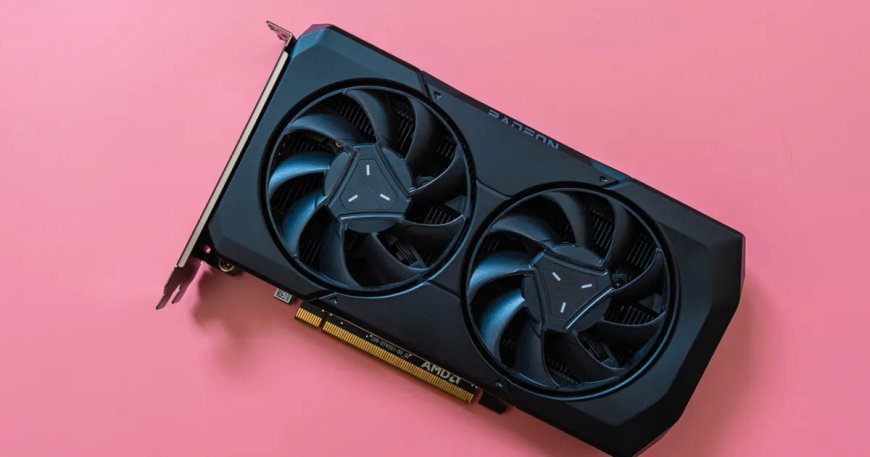AMD Unveils Radeon RX 7600 XT 16GB: A Closer Look at the Upgrades
AMD enthusiasts have eagerly awaited the official announcement of the Radeon RX 7600 XT, a graphics card that has been shrouded in rumors for several months. Now, the wait is over, and AMD has made it official. The RX 7600 XT, powered by the Navi 33 GPU, shares its roots with the vanilla Radeon RX 7600. However, what sets it apart is a significant boost in VRAM and clock speeds. This article dives deep into the specifications, pricing expectations, and the potential impact of these upgrades on the world of graphics cards.

Unveiling the Radeon RX 7600 XT: What to Expect
AMD's decision to equip the Radeon RX 7600 XT with the Navi 33 GPU, already featured in the RX 7600, raises questions about the enhancements that set these two cards apart. The Navi 33 architecture boasts 32 Compute Units (CUs), and the 128-bit memory interface remains consistent across both models. Given these similarities, AMD's strategy to elevate the RX 7600 XT centers on two key aspects: augmenting VRAM capacity and ramping up clock speeds.
As the Radeon RX 7600 XT prepares to enter the market on January 24, 2023, priced at an anticipated $329, let's delve into the specific improvements and expectations associated with this graphics card.
Also check Vastarmor launches Radeon RX 7700 XT
The Essential Specifications
To provide context for the Radeon RX 7600 XT's positioning within AMD's RX 7000-series, we'll begin by outlining the pertinent details. Additionally, we'll reference the RTX 4060 to establish a point of comparison for the RX 7600 XT's capabilities. While AMD has yet to unveil the official price, industry speculation suggests it will likely fall around the $299 mark.
Doubling the VRAM: A Significant Upgrade
The primary differentiating factor between the RX 7600 XT and its predecessor, the RX 7600, can be summarized in two crucial enhancements: increased clock speeds and a substantial boost in VRAM. To achieve this upgrade, AMD appears to have adopted a strategy similar to Nvidia's implementation in the RTX 4060 Ti 16GB, as well as various professional-grade AMD and Nvidia graphics cards. This strategy involves integrating two 2GB GDDR6 chips on each side of the PCB, operating in 'clamshell' mode, resulting in a total of 4GB per 32-bit channel.
The intriguing aspect here is that, until the industry embraces 4GB chips, potentially with the advent of GDDR7 but unlikely for GDDR6, this configuration represents the upper limit of memory utilization per 32-bit interface. While AMD has not officially confirmed this approach, it currently appears to be the most viable method for achieving 16GB of VRAM with a 128-bit memory interface.
The Navi 32 Conundrum
Early speculation surrounding the RX 7600 XT hinted at the possibility of AMD leveraging the Navi 32 architecture to enhance VRAM capacity without resorting to clamshell configurations. However, this notion was always met with skepticism, given the considerably higher manufacturing costs associated with Navi 32. This architecture necessitates the inclusion of the Graphics Compute Die (GCD) alongside multiple Memory Cache Dies (MCDs). The RX 7700 XT, already representing a scaled-down configuration of Navi 32, highlights the cost constraints associated with this architecture.
The Quest for Asymmetry and Future Possibilities
While it remains uncertain whether AMD could employ an asymmetrical MCD approach with Navi 32 to attain a 10GB graphics card (utilizing three MCDs with one half-populated), it's conceivable that such a card may never see the light of day in the consumer market. Instead, the role of catering to this middle ground might be better suited for previous-generation cards like the RX 6750 GRE.
Conclusion: The Radeon RX 7600 XT's Entry into the Graphics Card Arena
In conclusion, the arrival of AMD's Radeon RX 7600 XT 16GB marks a significant moment in the world of graphics cards. With its strategic combination of increased VRAM and higher clock speeds, this card is poised to make a splash. As we anticipate its launch on January 24, 2023, at an expected price point of $329, enthusiasts and gamers alike eagerly await the benchmark results and real-world performance of the RX 7600 XT. Will it ascend to the ranks of the best graphics cards, or will it carve out a unique niche within AMD's GPU portfolio? Only time and comprehensive testing will unveil the true potential of this formidable contender in the graphics card arena.


































